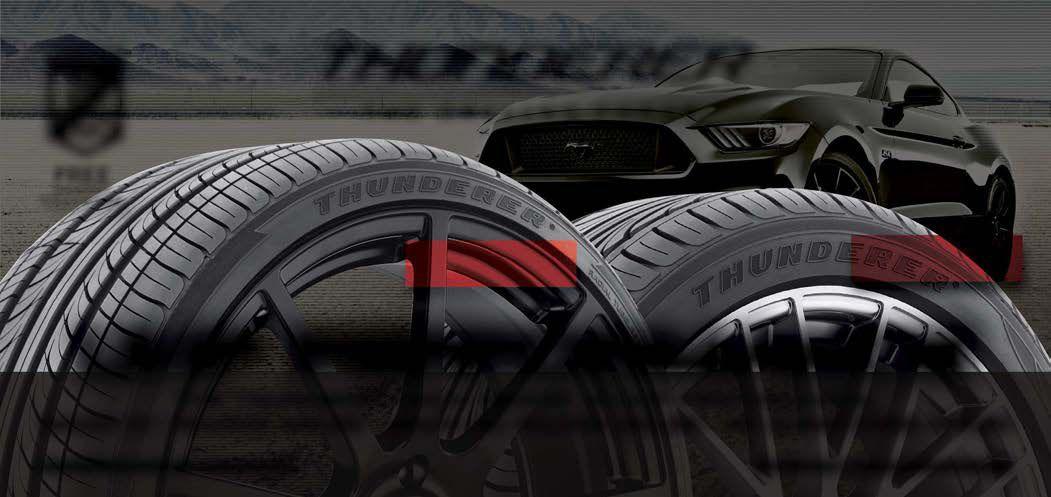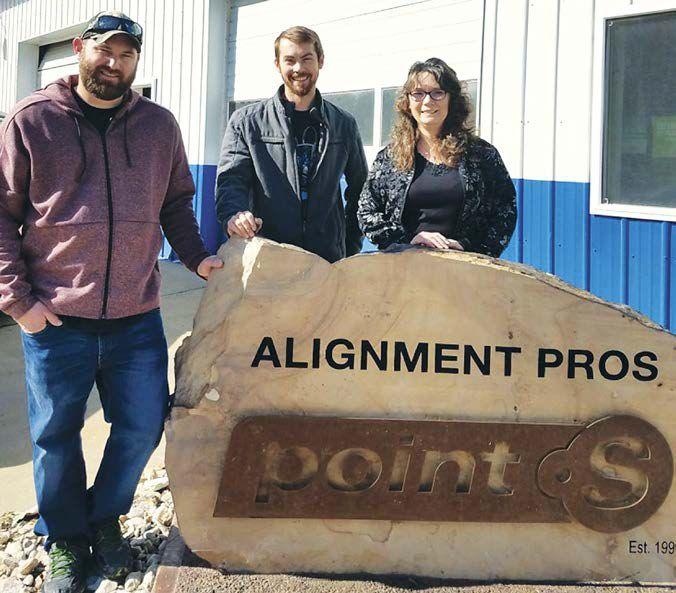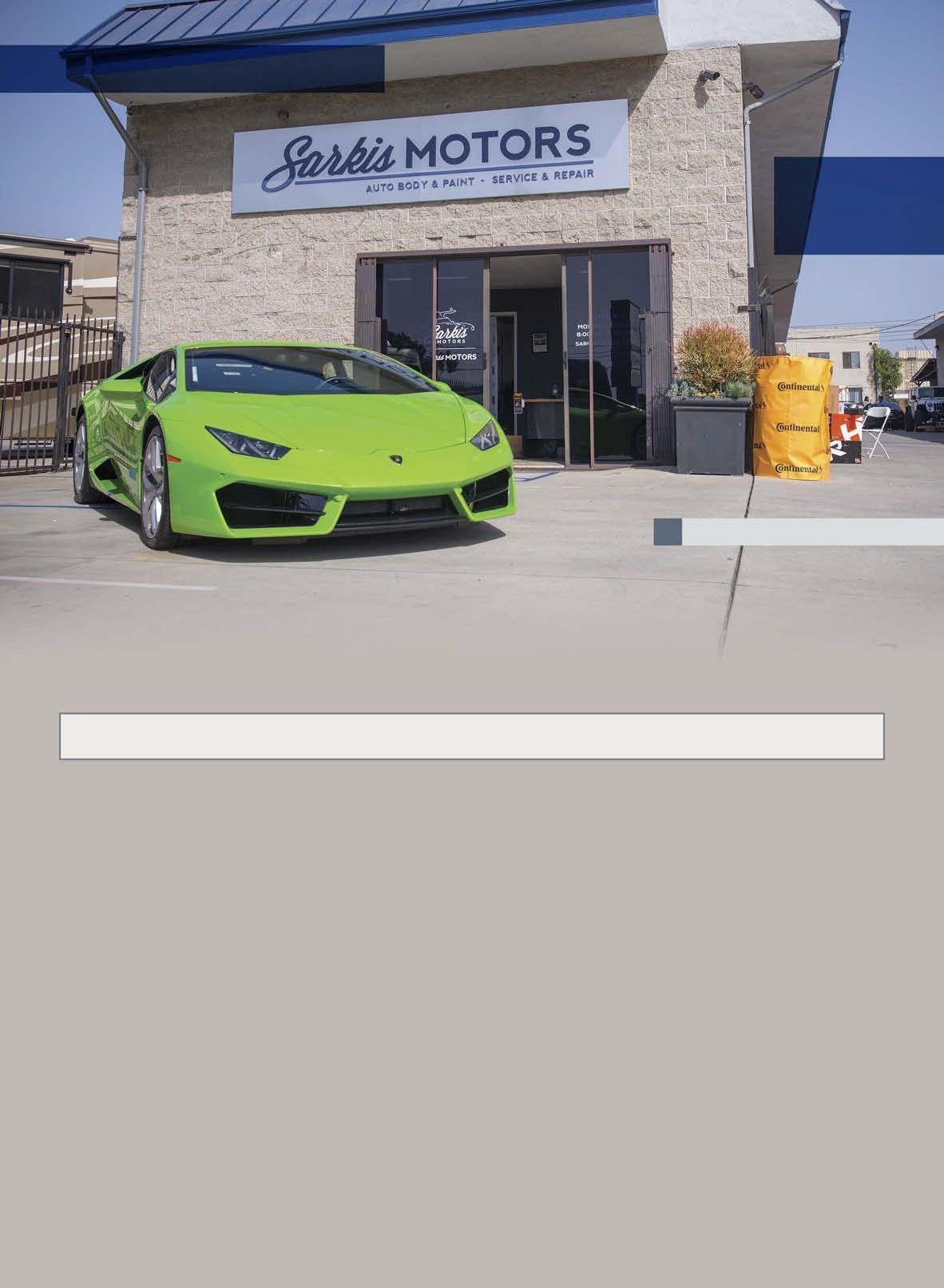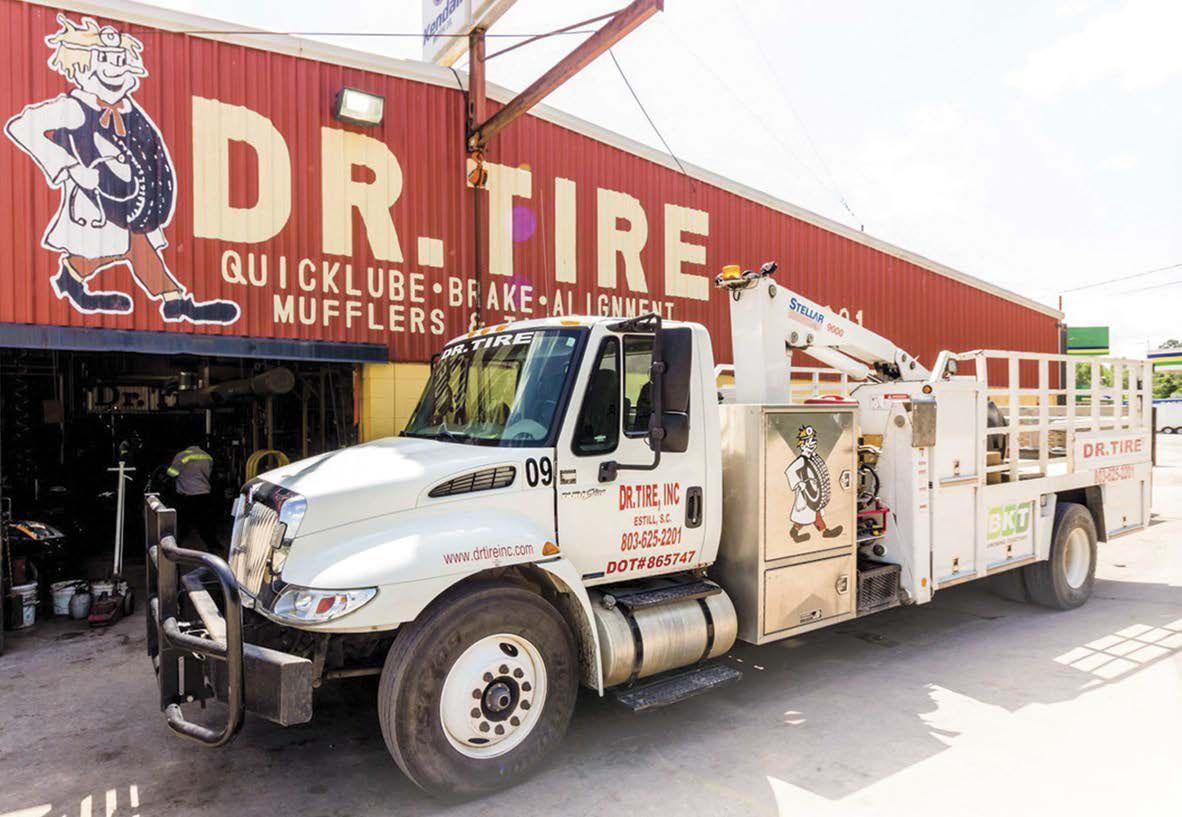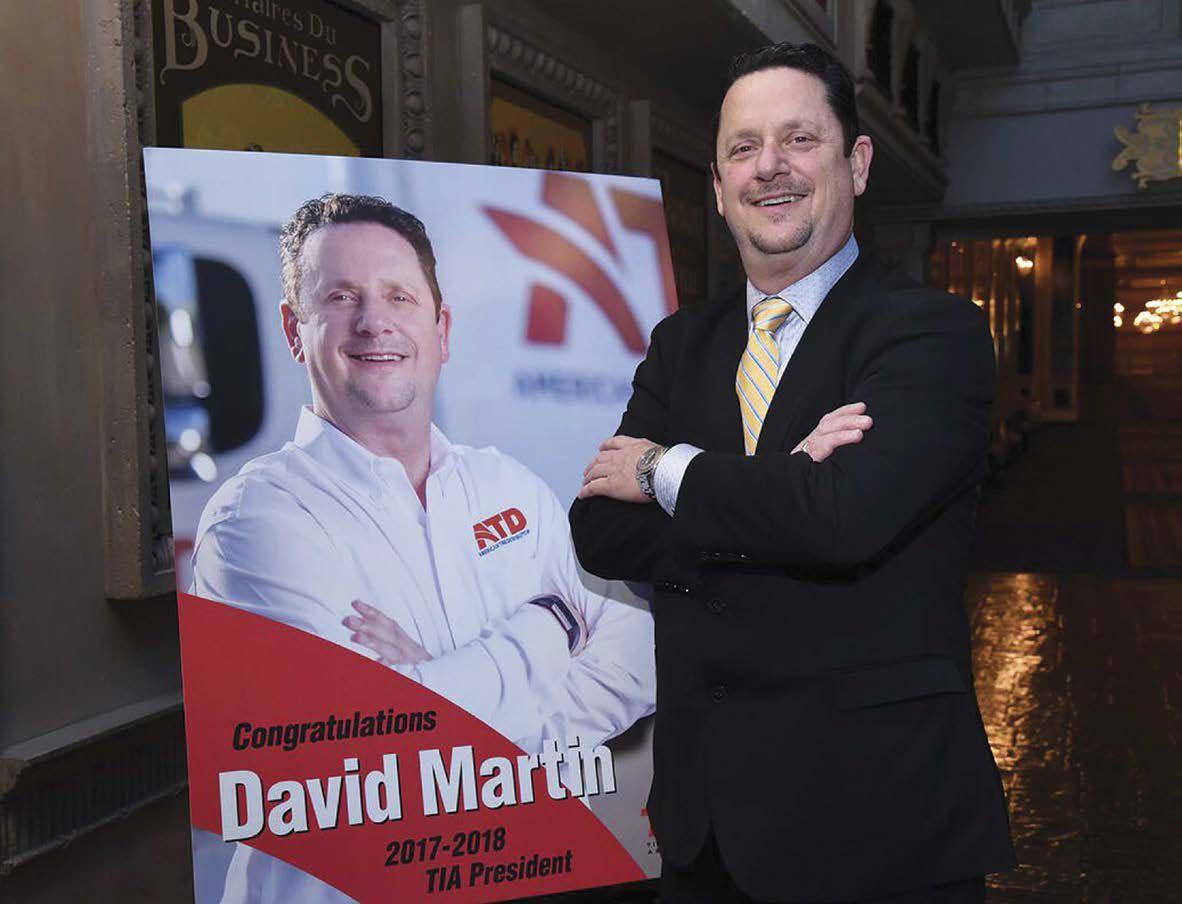
32 minute read
Why not Generation Y?

from Modern Tire Dealer - November 2018
by EndeavorBusinessMedia-VehicleRepairGroup
There are plenty of millennials out there. Here’s how to sell them on a career in commercial tire service
“We as an industry must convince members of Generation Y that the truck tire business has the potential for career advancement and the lifestyle many millennials value the most,” says Kevin Rohlwing, the Tire Industry Association’s senior vice president of training.
By Kevin Rohlwing
Marketers across North America are obsessed with people who were born between 1977 and 2000. This generation, known as Generation Y or the Millennial Generation, makes up 25% of the U.S. population and 21% of consumer discretionary purchases — which translates to over a trillion dollars in direct buying power.
They are generally considered adventurous, entitled, innovative, optimistic and self-absorbed, yet they still want to please others. Social issues and causes play pivotal roles in where they shop or work. Millennials have grown up more sheltered than any previous generation, as “helicopter parents” tried to shield them from everything that may cause the slightest physical or psychological discomfort. Everyone gets a trophy. Everyone is important and everyone has value.
For the Baby Boomers and Generation X in the workplace, his generation is a puzzle without the box. We’re pretty sure all of the pieces are there, but we’re not confident we can put it together because we still don’t have a picture of what it looks like when it’s completed.
Millennials tend to be wired differently, with an unprecedented level of dependence on technology.
As a result, they also are 2.5 times more likely than previous generations to be on the leading edge of adopting new technology, according to U.S. Chamber of Commerce research.
Bottom line, they don’t believe in the rules that we were taught to follow, so we must adapt to their needs or avoid them at all costs.
Work is a means to an end for them, and if a particular job doesn’t fit into their schedule, then they might give up and find something else. Flexible hours and friendly environments are highly valued, while the typical 9 to 5 jobs of their parents and grandparents are considered less desirable (unless it supports the lifestyle that they want).
These are things every commercial tire dealer needs to keep in mind when planning for the future.
ATTRACTING YOUNG BLOOD
As a typical example of Generation X with a millennial son and millennial employees, I am constantly trying to figure out how I can motivate and manage these young people, who are so unlike me now or who I was when I was their age, at least that I can remember.
While the methods for servicing passenger and light truck tires have evolved since I started in the tire business 36 years ago, most of the tools and “technology” for servicing commercial truck tires have not changed.
A recent study suggests that more than half of the workforce will be millennials by the end of 2019. So suggesting they follow traditional methods for truck tire service such as demounting and mounting tires using tire irons is like asking them to change the channel without a remote or use a rotary pay phone to make a call.
Gadget tools that take the place of tire irons may seem like a step in the right direction, but most young people are still going to see a lot of extra effort and labor. The level of technological dependence/ intuition for this generation is unlike anything we have ever seen, so doing anything by hand is probably considered undesirable.
Commercial truck tire dealers also need to be more aware of the company image and energy if they want to attract quality workers. A good 20-something potential employee probably has options that pay the same with a lot less work. The best candidates need to be convinced the truck tire industry could be their ticket to a long and prosperous career. There needs to a starting point that is both clearly defined and just that, a start. By no means am I an expert on millennials, but I have some insight I think may help the Boomers and Gen X’ers relate to the future of the commercial tire service workforce.
First impressions are everything for the quality millennial candidate. Young people with options are looking for some curb appeal to the business. Well lit, clean and organized with modern equipment is a must. They have to see that there is some structure, and technology is being used to make the job easier. Three guys demounting and mounting endless tires by hand with tubeless tire irons and bucket of soap? The good candidates are moving on. Three guys operating a truck tire changing machine in a well-organized system? Now you might have their attention.
Millennials are collaborators. When they see everyone working together so no one has to work harder than anyone else, everybody wins. Everyone gets a trophy.
Equally important is the need to be honest in describing the job. I used to tell prospective truck tire technicians that when it’s hot, they will sweat; when it’s cold, they will be cold; and when it rains, they will get wet. It is a physical job that will always be physical.
This upcoming generation spends more on fitness than any other. All joking aside, we could probably save them some money on gym memberships with all the lifting and physical work that happens on a daily basis. If they are really into it, truck tire service would be a great warmup for the
gym after work. I would even consider paying for the gym membership if it meant landing a good technician.
A NEW STARTING POINT
Truck tire service isn’t pretty, so there has to be something in place to dress it up and make it look more attractive. Again, it goes deeper than a fresh coat of paint on the walls and an expensive machine in the corner, although that helps.
What is the onboard process? What about training? Will they be given a mentor in the beginning to “show them the ropes”? Members of this generation like to have their hands held at first because someone has been holding their hands at critical moments for most of their lives. Legally they are adults, but emotionally, many of them are still a little unsure of how they will survive totally on their own. If you want to attract quality young technicians, then they have to see that you have plans to help them succeed from the first day.
Historically, most new hire truck tire technicians have started the job in the shop. For millennials, it needs to start in the classroom or at a computer terminal. According to Occupational Safety and Health Administration (OSHA) regulation 29 CFR 1910.177, every employee who touches a tire on a truck or an off-road machine must be trained. The content required by OSHA creates the need for some instructional training that is best completed in a classroom environment. Then there is a skills requirement that must be met, along with regular evaluations to ensure the employee is maintaining an acceptable level of proficiency. I’m probably a little biased, but any tire dealer who services truck and/or off-road tires should make sure every technician completes the 200-Level commercial program offered by the Tire Industry Association (TIA).
DRIVERS NEEDED
Once the mentors sign off on the new hire training process, some of those employees will stay in the shop, but the ones with a good driving record have the prospect of operating a road service truck.
Looking back, some of my favorite times in the tire business were running a service truck. The combination of windshield time and no supervision had definite appeal to a teenager and college student working over the summer. Potential employees need to see it’s all part of the package that leads to the goal.
One trait of millennials is their need to be challenged. I cannot think of a better place for challenges than emergency tire road service. That’s what appealed to me many years ago. It was me and my truck; no matter what was thrown at me, I had to figure it out. Mobile truck tire technicians can make a good living if they drive safely and obey traffic laws while taking care of themselves. How is the employer going to help them reach that goal?
Of course, none of that will matter if the fleet is a hodge-podge of old trucks and junkyard Frankensteins. The days of 2-55 air conditioning (both windows down at 55 mph) and a wooden plank for loading tires should be long gone. Modern service trucks with hydraulic lift gates and other features that make it easier for the technician are going to be the deal maker.
If OTR and farm tire service are part of the equation, it opens up an entirely different aspect of mobile service with a
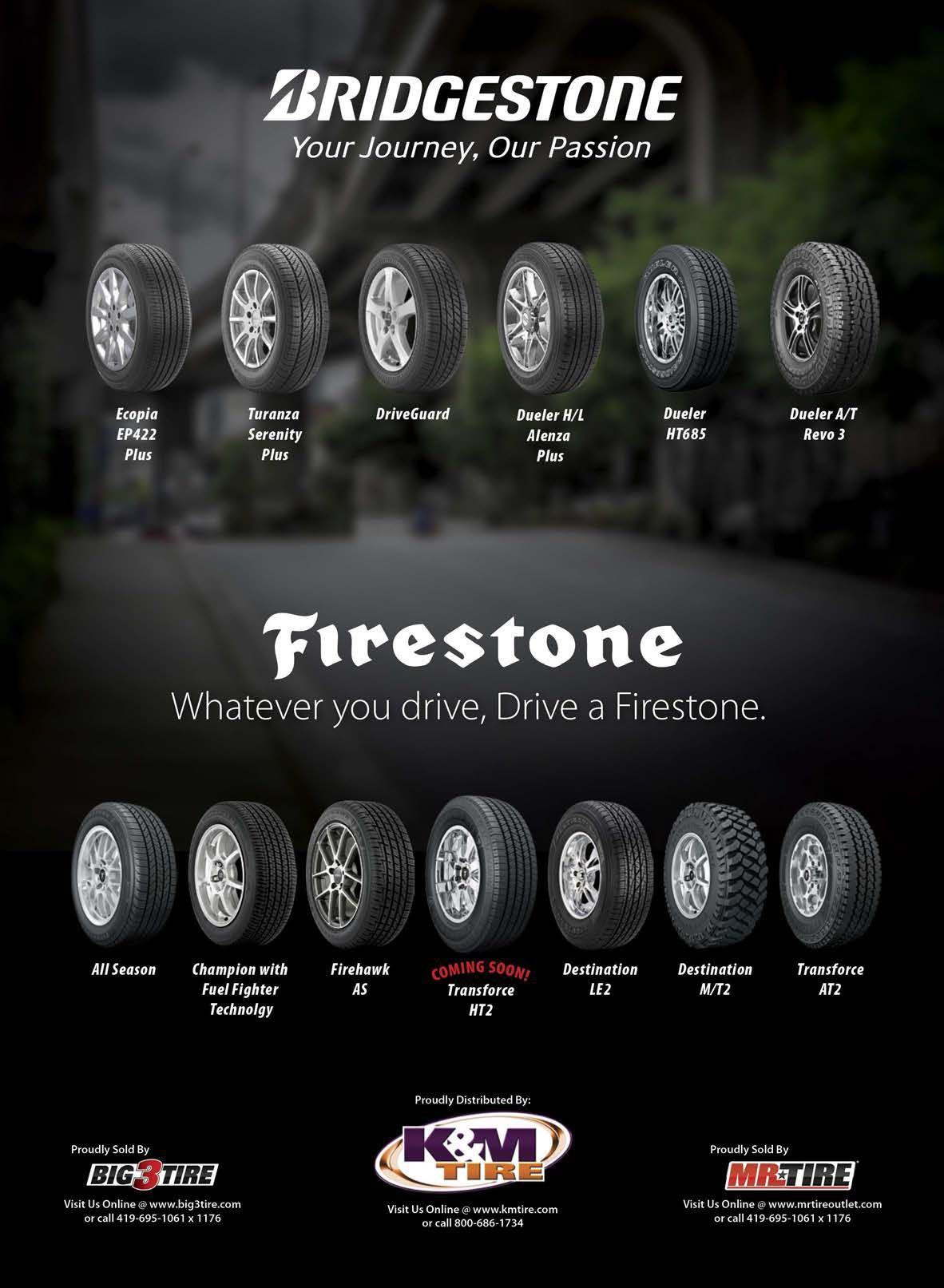
higher degree of technology (not to mention a higher degree of compensation).
MORE THAN TIRE SERVICE
The impact of the federal Compliance, Safety, Accountability (CSA) program has opened up additional career paths for those on the technician track. Rather than transition into an OTR/farm tire technician, the growing need for light mechanical repairs/ maintenance has already led a number of commercial tire dealers to open up new truck and trailer service divisions.
Technicians who show a higher level of technical aptitude become ideal candidates for a fleet service position. They still service the occasional tire or two, but most of their time is spent on lights, brakes and other basic mechanical components in need of repair.
Fleets cannot risk maintenance violations with the new CSA reporting requirements, and the government has data that proves it’s working, which means it’s not going anywhere. As a result, the overall cost of maintenance citations to the fleets is growing because substandard scores are a flashing red light for roadside inspectors. It’s as simple as the worse the score, the more frequent the inspections.
That is why more commercial tire dealers are positioning themselves as total maintenance partners who can handle everything short of major repairs. Millennials looking for a career path that involves working with their hands and their minds could be ideal in a light mechanical position. It could be a dream come true for each of you.
Other job candidates might need to see a different picture. The service truck becomes just another step on the ladder. After an onboarding process that includes significant training and a mentorship period with an experienced technician who understands and embraces the role, there is a period of time working in the shop under the supervision of management and experienced technicians.
When the collective group feels the technician is competent, the promotion to mobile service takes place. From there, the employee spends a few years learning the trade and, more importantly, the customers. After a while, the relationships built on service truck duty become the perfect foundation for a career in sales. This change in the career path involves more mentoring from an older and more experienced salesperson, as well as additional sales training on products and techniques. It’s the type of move that provides more flexibility (something millennials crave), more income (something they expect) and the start of a long relationship with the employer and the customers (something they value).
For super ambitious millennials, there is the road to an executive, management or ownership position. In order for that to happen, they have to understand that whatever path they choose has the potential for greater things down the road. For large companies, there are countless management positions that will become available as the Boomers and Gen Xers retire. Tire dealers historically “grow their own” and promote from within. If the company values a college degree, then tuition reimbursement might need to be part of the package for the right candidate.
After they see the plans and how they might fit into the big picture, there needs to be an environment that is appealing and nurturing. The best millennials recognize that people make companies successful, so they are looking for a workplace with a positive vibe. Again, that collaborative spirit of working together with the support of a manager or supervisor who wants to help them attain their long-term goals is important.
At the same time, they need to feel that they can approach management with new ideas, and sometimes they just want to be heard. Increased sensitivity and the need for safe spaces are millennial trademarks that cannot be ignored.
INFUSION OF NEW BLOOD
Servicing truck tires is a dirty job, and it will always be dirty to some degree. It takes someone with a strong constitution to go into that arena every day regardless of the circumstances or weather conditions and get the job done. The best millennial prospects might need to be convinced that there is a good life with steady pay and room for advancement under all of that dirt and chaos. Outside all the noise made by impact wrenches, bead-seating tanks and repair tools, there is an industry that literally keeps the world moving.
In a tight job market, the truck tire business is more challenged than ever to find good employees. It’s not pretty and it definitely isn’t clean, but it doesn’t have to be so physically demanding. Road service trucks in Europe have tire changing machines that literally fold out the side. While this model will not realistically replace standard service trucks in the North American market given the number of tire service vehicles in operation, I suspect we will be seeing more of them domestically in the future.
For example, rather than put a lot of physical demands on a technician by sending them out for 10 or 20 wide-base single demounts and mounts at the customer’s yard, make the investment in one service truck with a machine. That market is fairly well established, and changing those tires by hand is incredibly physical. One or two a day won’t add up to much, but the process still takes a toll on the body, so multiple wide-base single demounts and mounts by hand are going to exact a cost over time.
On the other hand, add several twobar restraining devices with a multi-tire inflation system to a mobile tire changing machine, and you have a portable tire shop that can literally operate day after day without any physical limitations.
We are facing a major talent gap in the truck tire industry. Each year, more Boomers are getting set to retire. Millennials are in the perfect position to take over the industry when they are at a much younger age than the generations before them. If commercial tire dealers are thinking about planning for the future, then the search for top quality talent needs to begin soon.
We as an industry must convince members of Generation Y that the truck tire business has the potential for career advancement and the lifestyle many millennials value the most. However, we must also recognize thatsome serious changes need to be made before we can hope the good ones will even take the time to look or listen.
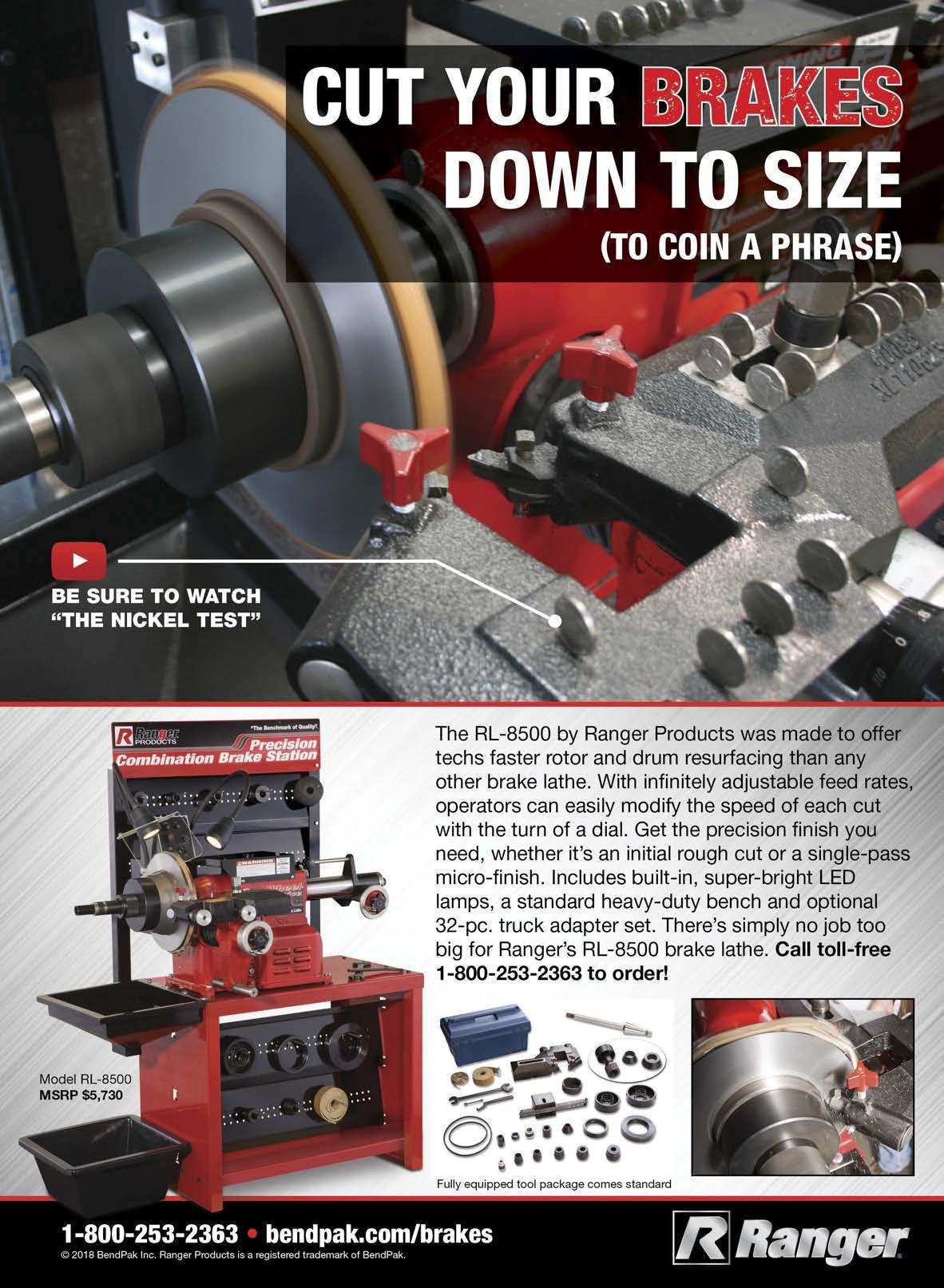
R/T tires: new category, not marketing hype
CONSUMER DEMAND HELPED CREATE A HYBRID-TERRAIN TIRE
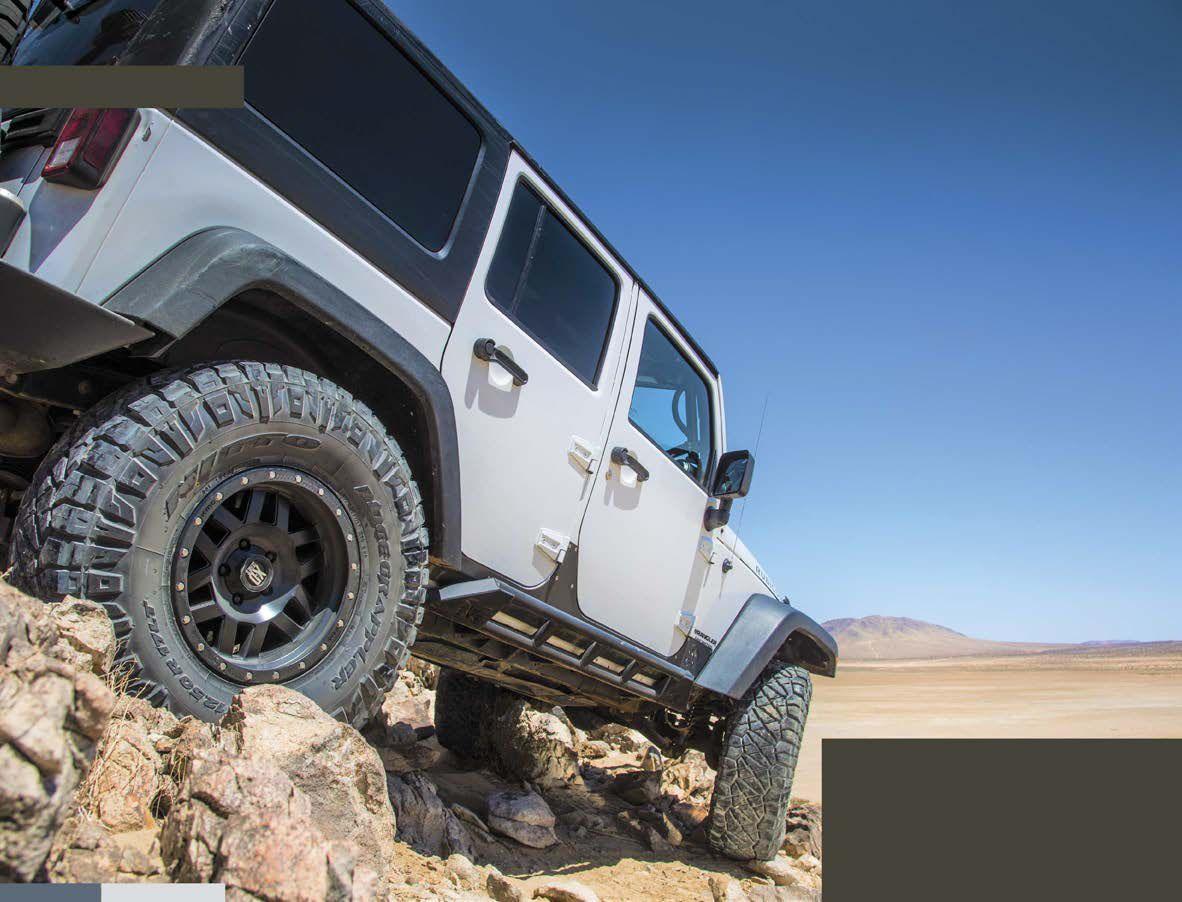
By Bob Ulrich
Is the alphabet soup known appropriately as the LT tire market big enough for another letter? Until recently, there were only three types of LT-sized tires: H/T for highwayterrain, A/T for all-terrain and M/T for mud-terrain.
Now there may be the makings of an R/T, or rugged-terrain, tire, although the U.S.
Tire Manufacturers Association (USTMA) does not yet acknowledge or track such a tire segment. But light truck tire manufacturers and marketers confirm consumers want a tire that fits in-between the A/T and M/T tire segments.
“Nitto does not refer to this segment as an R/T, but rather our enthusiast base describes it as the hybrid-terrain,” says Angelo
Naval, senior director of product planning and business development for Nitto Tire
U.S.A. Inc. “We define hybrid-terrain as a light truck tire product that incorporates the best traits of an A/T and M/T tire into one.
“The Nitto enthusiasts were demanding… a product that has the characteristics of an
A/T tire — i.e., comfort, low noise — but wanted a more aggressive design like an M/T tire to match the strong persona of their full-size pickup truck. A hybrid terrain needs to have a good balance of on- and off-road performance.”
Nitto (Ridge Grappler), Toyo Tire U.S.A. Corp. (Open Country R/T), American Kenda Rubber Industrial Co. Ltd. (Klever R/T), Omni United USA (Renegade RT+) and Atturo Tire Corp. are actively marketing R/T or hybrid-terrain tires. Atturo uses another letter, “X,” in the nomenclature for its Trail Blade X/T.
American Omni Trading Co. LLC, Continental Tire the Americas LLC, Cooper Tire & Rubber Co., Falken Tire Corp., Hankook Tire America Corp., Kumho Tire USA Inc., Maxxis International, Nexen Tire America Inc., Nokian Tyres Inc., Pirelli Tire North America Inc. and Yokohama Tire Corp. are among the companies without a tire targeted for the R/T segment, although many of them are thinking about it.
Bridgestone Americas Tire Operations LLC, Michelin North America Inc. and
“Our top objective was to have an aggressive tread design with low noise,” says Nitto’s Angelo Naval about the Ridge Grappler. After preparing 3D renderings of the hybrid-terrain tread pattern, Nitto sought market feedback from specialty shops and Nitto dealers, “as well as individual enthusiasts.”
Goodyear Tire & Rubber Co. also are without R/T-specific products, although the Goodyear Wrangler DuraTrac, introduced in 2009, is considered by many to be the first R/T tire.
How do you define an R/T tire? Is the market growing? What sizes make up this new segment? We asked the experts for information on this unofficial tire segment. It’s now official.
MTD: How do you define R/T tires?
Michael Mathis, Atturo: We consider the hybrid-terrain a tire which delivers the look of the M/T, but the lower noise and better road response of an A/T. As the popularity of our Trail Blade M/T was growing, we heard from consumers who loved the knife blade incorporated into our “menacing” and distinctive sidewall and tread design, but really wanted a tire which was more highway friendly without giving up the appearance. That is how we developed our Trail Blade X/T. It has the sidewall and shoulder appearance of an M/T, but with a center tread more like an
A/T. The performance delivered is about 90% of the off-road (mud, sand, gravel) of our M/T, but a significantly lower noise level and improved overall on-road manners for steering, braking and comfort.
Scott Jamieson, Cooper: An R/T, or rough/rugged terrain tire, blends the more aggressive look of a mud tire with the more comfortable ride and long-lasting performance of an all-terrain tire. R/T tires generally enhance the look of the truck over and above what the OE tire provides and give the driver greater off-road traction compared with an all-terrain tire. And, R/T tires are not as noisy or harsh riding as mud tires generally are.
R/T tires are a great way to enhance the curb appeal of a vehicle and do so without giving up ride comfort. An R/T tire is generally considered a notch above an all-terrain tire in terms of off-road performance enhancements. It’s a great tire for the mid-level enthusiast — someone who is doing more than just driving to the river to go fishing, or out to the trails when it snows. These tires are for people who really like to go off-road regularly, but might not be as serious as those who travel to extreme off-road destinations as a passion. An R/T tire can generally handle softer ground and more uneven terrain than an all-terrain product can.
Drew Howlett, Falken: We define an “R/T” tire as a “hybrid” tire, in-between an “all-terrain” type tire and a traditional “mud-terrain” type tire. We know many SUV and light truck consumers want the aggressive looks of mud-terrain tires, but they don’t necessarily need the extreme off-road capability that those tires provide, nor do they want the on-road compromises. During the alliance between Sumitomo Rubber Industries and Goodyear, the Dunlop Radial Rover R/T was born; I’d venture to say this was one of the first if not the first “R/T” tire in the U.S. market. The Dunlop Radial Rover R/T featured an all-terrain-like center tread with open shoulder blocks, which were pinned for studs. Since then, the Goodyear Wrangler DuraTrac and Cooper Discoverer S/T MAXX joined the hard-working R/T tire crowd, and were adopted by many consumers for aesthetic reasons over capability. This was the first group of hybrid R/T tires in my mind. Today the Toyo Open Country R/T and Nitto Ridge Grappler, along with some lower tier offerings, represent the modern R/T-type tire in the U.S. market.
Daniel Gode, Hankook: While not
WHO’S WHO OF R/T TIRE RESPONDERS
The following companies, in alphabetical order, responded to our request for in-depth information on the rugged-terrain, or hybrid-terrain, tire market.
• Michael Mathis, president, Atturo Tire Corp. • Scott Jamieson, director of product management, Cooper Tire & Rubber Co. • Drew Howlett, product manager, light truck and SUV tires, Falken Tire Corp., a subsidiary of Sumitomo Rubber North America Inc. • Daniel Gode, product marketing associate, Hankook Tire America Corp. • Brandon Stotsenburg, vice president of the Automotive Division, American Kenda
Rubber Industrial Co. Ltd. • Chris Han, marketing manager, Kumho Tire USA Inc. • John Wu, product manager, Maxxis International. • Angelo Naval, senior director of product planning and business development, Nitto
Tire U.S.A. Inc. • Hans Dyhrman, director of marketing for North America, Nokian Tyres Inc. • Michael Cati, chief operating officer, Omni United USA, a subsidiary of Omni United (S) Pte. Ltd. • Chris Gomez, product marketing manager, Toyo Tire U.S.A. Corp. • Fardad Niknam, senior director of product planning, Yokohama Tire Corp.
“This is not part of our lineup right now,” says Chris Brackin, vice president of sales for American Omni Trading Co. LLC. “And based upon our research, it will be something we (will take a look at) for late 2019 at best.”
officially named, the market appears to have defined the segment as somewhat of a hybrid, using terms such rough-terrain, rugged-terrain, hybrid-terrain, and extreme all-terrain. It appears that the intent is to meet the demand for on-road comfort and performance while providing the more aggressive appearance of a mud-terrain tire. The visual element comes from a more distinct looking, and sometimes practical, shoulder and sidewall design while attempting to reduce noise and vibration by keeping a lower void ratio in the tread pattern.
Brandon Stotsenburg, Kenda: Traditional A/T tires have been trending toward more on-road applications, featuring lower noise and often offering mileage warranties. This has opened an opportunity for a compromise of a more traditional A/T tire with an off-road M/T tire as shown by the “rough- or rugged-terrain” label. The end user is likely to be either a work truck or aspirant consumer who wants the look of an off-road tire and feel of an A/T tire. This tire must be capable of strong off-road performance with enhanced winter performance in addition to reasonable noise and ride.
Kenda introduced its new Kenda Klever R/T KR601 product targeted specifically at this segment in late 2017 after spending considerable resources at our Akron Technical Center to properly benchmark and develop a tire specifically for the North American consumer. We describe the Klever R/T as follows: “Premium performance for the value-driven consumer designed to conquer rough terrain without sacrificing the ride and comfort of an A/T tire, offering exceptional durability with aggressive styling, an optimized tread design provides the right solution for 4x4 owners on the road, in the snow or in any off-road environment.”
The R/T tire needs to perform at an off-road level comparable to the M/T tire, but really allow the consumer to experience on-road ride and noise comparable to a traditional A/T tire.
Chris Han, Kumho: A general definition for the R/T tires would be a quieter M/T product with better handling on the road.
John Wu, Maxxis: A tire with a void ratio somewhere between M/T and A/T.
Hans Dyhrman, Nokian: R/T tires provide maximum durability, stability and performance for the instances when pavement or asphalt is not an option. At Nokian Tyres, we build our products with safety, longevity and sustainability in mind. That same mind-set is still relevant when it comes to R/T tires, but in addition to that, we are always working to ensure all our tires are tailored to meet the expectations of the adventurous and fearless consumer.
Michael Cati, Omni United: Ruggedterrain tires are a combination of all-terrain and mud-terrain tires. They offer the driver
good on-road handing, comfort and a quiet ride of an all-terrain tire while having the rugged off-road capabilities of a pure mudterrain tire. This makes them the best of both worlds for drivers.
Chris Gomez, Toyo: Our Open Country R/T tires are meant to be a perfect solution for customers who want the aggressive looks and off-road performance of a mud-terrain tire but the on-road manners of an all-terrain tire. Toyo… and the Open Country R/T created this hybrid category years ago and today remains one of the strongest options for customers looking for the best of both worlds.
Fardad Niknam, Yokohama: Customers who are looking for tires in between A/T and M/T, where an all-terrain tire is not aggressive enough but they don’t want to compromise the noise that comes with M/T products. They also generally don’t want to pay the M/T price premium.
MTD: Is the R/T segment growing?
Mathis, Atturo: We are seeing consistently strong growth in our Trail Blade X/T. In certain sizes, it now outsells the same pattern in an M/T. There are always new consumers and vehicle types being drawn into the segment. The range of vehicles now spreads from a Subaru Outback to a Cadillac Escalade.
We believe the hybrid pattern is the future of the off-road segment. Dealers who do not have a hybrid type tire in their offering, are missing a growing segment of the market.
Howlett, Falken: The R/T segment is definitely growing. Tire manufacturers continue to introduce these hybrid-type R/T products into the marketplace, and we see these new R/T tires on the road, but at the expense of all-terrain tires and mud-terrain tire sales, as the LT tire market is relatively flat.
Gode, Hankook: This segment appears to be following the same trend as the vehicle market, where we see increasing sales of SUVs and light trucks.
Wu, Maxxis: Our customers believe so, but whether it’s cannibalizing A/T and M/T sales from the same brand is up for debate.
Naval, Nitto: It’s difficult to provide empirical evidence that this new segment is
The Toyo Open Country R/T “is inspired by the… Open Country M/T, while its quieter ride is a nod to our Open Country A/T II,” says Toyo’s Chris Gomez.
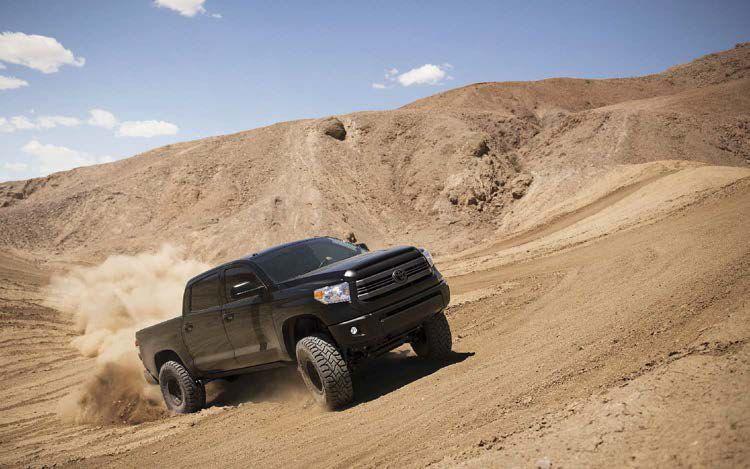
growing within USTMA as it does not have a separate designation for these products. However, our sales number shows that our offering, the Ridge Grappler, is growing at an exponential rate and is becoming the flagship tire within our light truck segment offering. We also see other manufacturers introducing new products in the segment.
Dyhrman, Nokian: As consumers continue to spend an increase of their funds on vehicles, and the truck market continues to grow, it makes sense for the R/T segment to continue to flourish as well. Vehicles are a large investment, and more and more consumers are realizing the care necessary to maintain the longevity of them.
Cati, Omni United: Yes, this segment is growing in the U.S., and there are more rugged-terrain tires on the market with more expected to come. One of the reasons why this is getting popular is that drivers like to have an aggressive-looking tire and still like to enjoy the on-road benefits of their new vehicle.
Gomez, Toyo: The Open Country R/T has seen steady growth ever since its introduction to the marketplace. We believe that as customers’ knowledge of tire performance grows, the Open Country R/T is well positioned to achieve even further growth in the years to come.
Niknam, Yokohama: There is no recognized segment as R/T. However, customers are getting more interested in these kinds of in-between products because they will answer their aggressive taste with less compromise on noise.
MTD: Do you market an R/T tire line?
Mathis, Atturo: Atturo continues to build out the Trail Blade X/T range with more sizes being added on a regular basis.
Jamieson, Cooper: At the time of this writing, Cooper does not have an R/T product on the market, but as you can see by our responses, this is a category that we are quite engaged with and one where we are working to understand the consumer.
Howlett, Falken: Currently, Falken does not market an R/T line, but we took the approach with our WildPeak A/T3W all-terrain product offering to be nearly as rugged and capable as many of the R/T tires on the market. We are always evaluating new product concepts and will continue to evaluate the feasibility of an R/T tire in the WildPeak product line, but currently we see an R/T tire being a tight squeeze between our WildPeak A/T3W and our WildPeak M/T.
Gode, Hankook: We anticipate adding this to our lineup in the near future.
Han, Kumho: We do not currently offer in the market a product that was developed as an R/T segment product. Our Road Venture MT51 would fit best in this category, though, as it is what we consider a mild M/T... with a quieter ride and enhanced handling.
Wu, Maxxis: We don’t have an R/T line, but we are always evaluating potential segments.
Naval, Nitto: Our hybrid-terrain product is the Ridge Grappler. We are currently adding hard metric sizes to the line-up ranging from 17-inch to 22-inch rim diameters.
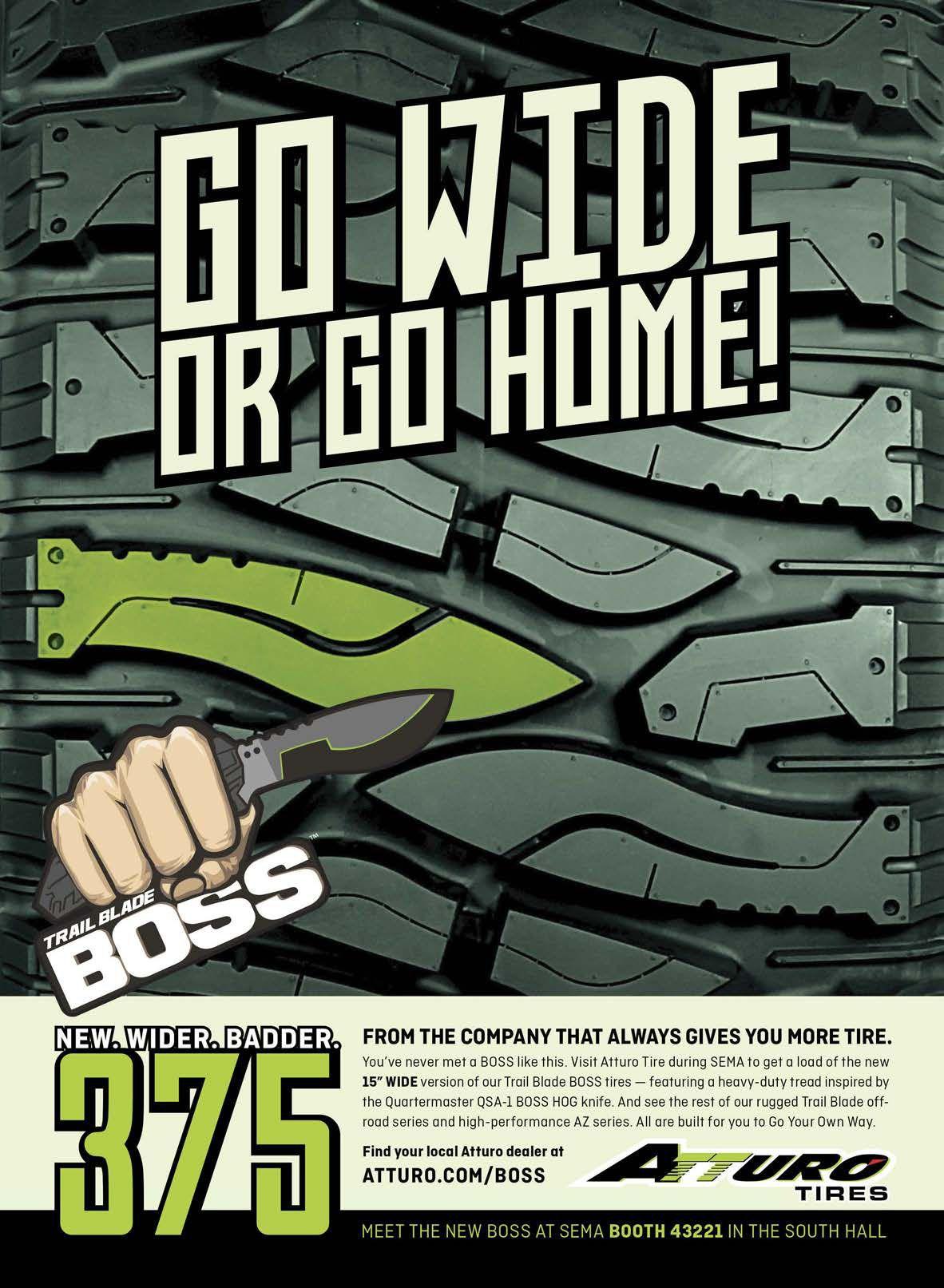
Kenda dealers recently raced on Klever R/T tires at the company’s “Light Truck Bootcamp” in Las Vegas in partnership with VORE (Vegas Off-Road Experience).
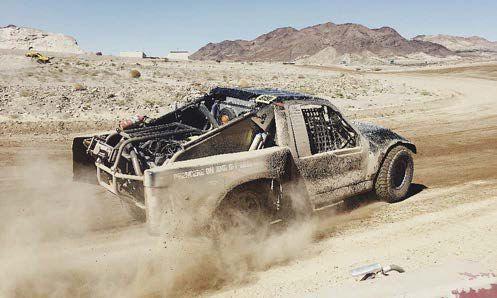
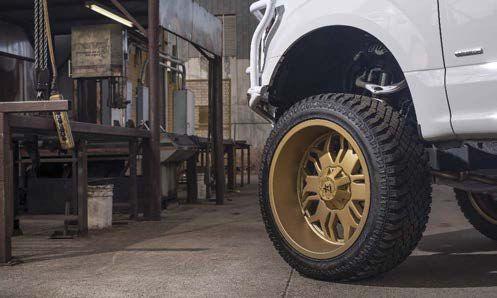
“The primary difference in our X/T and A/T is the increased void ratio and tread depth,” says Atturo’s Michael Mathis. “The inverse is true from the M/T to X/T.”
Dyhrman, Nokian: Although we do not have a specific R/T- designated line, we do offer the Nokian Rockproof. This product offers commercial grade durability for off-road enthusiasts and professional driving such as logging, mining and other outdoor professions.
In addition, we are always looking ahead to the next generation of tires and are constantly building upon and improving on our designs.
Cati, Omni United: Yes, Radar Tires has a recently launched its Renegade RT+ line that has over 27 SKUs with more expected to be launched in phases by early next year.
REPLACEMENT OVERLAP R/T tire sizes are made up of A/T and M/T sizes
“There is a huge amount of crossover in sizes among the different LT tread types,” says Michael Mathis, president of Atturo Tire Corp.
Here are the top five aftermarket A/T and M/T tire fitments without original equipment fitments in the market.
A/T
1. 35x12.50R20LT 2. LT285/55R20 3. LT285/65R18 4. LT305/55R20 5. LT275/55R20
M/T
35x12.50R20LT 35x12.50R17LT 33x12.50R20LT 35x12.50R18LT LT305/55R20
The top five sizes of the two segments combined are 35x12.50R20LT, 35x12.50R17LT, LT305/55R20, LT285/65R18 and LT285/55R20. Source: Modern Tire Dealer research
Gomez, Toyo: As far as the next-generation Open Country R/T we are always looking for ways to improve our existing products and ways to continue to innovate like we have done with the Open Country R/T.
Niknam, Yokohama: At Yokohama, we have created an X-version of our products to address in-between segment customers. X stands for “Xtra” or “Xtreme,” depending on the segments. The X-MT tire was developed to address customers with the need for extreme mud-terrain performance. Yokohama will introduce two new “X” products in 2019, which will cover the other in-between segmentation.
MTD: What is the size range within the
R/T segment? What is the most popular size?
Mathis, Atturo: Atturo currently offers 24 sizes in our Trail Blade X/T, mixed between hard metric, LT-rated and flotation sizes covering both OE and plus sizes.
The most popular size for us today is the 275/55R20 followed closely by 33x12.5R20. This is a perfect example of the versatility of the X/T pattern.
It can suit an OE replacement with a more capable and impressive tread, or be an upgrade for a lifted or leveled truck.
Howlett, Falken: The most popular size is undoubtedly 35x12.50R20LT. A few other popular sizes that are great candidates for an R/T-type tire are 35x12.50R17LT, LT305/55R20, LT285/65R18, LT285/55R20, 35x12.50R18LT, along with many LT295 and other modern high-flotation sizes.
I typically look at aftermarket tire sizes with no corresponding OE fitments when considering an R/T-type tire, because we know these consumers are modifying their vehicles, and changing to larger wheels and/or tires.
When there are significant sales in both A/T and M/T tire categories for a given tire size, and the rim size is that of a modern light-duty truck — at least 17 inches, but more frequently 18 inches and 20 inches, or even 22 inches-plus — we consider those tire sizes to be candidates for an R/T-type tire.
Stotsenburg, Kenda: Our size range is currently from 17 inches to 22 inches, although we are considering some traditional 16-inch sizes. The 17-inch sizes are very popular as OE replacement sizes. We are seeing strong growth from the plus sizes
Gode, Hankook: The R/T segment appears to follow the A/T segment, as both LT and P-metrics are available, yet some LT fitments are only found in the M/T segment.
Daval, Nitto: Nitto’s Ridge Grappler size lineup ranges from 30 inches to 38 inches in overall diameter with rim diameter ranging from 16 inches to 24 inches. The most popular size in the Ridge Grappler is the 35x12.50R20LT.
Cati, Omni United: Since rugged-terrain tires are a combination of all-terrain and mud-terrain tires, their size range is similar to the current all-terrain and mud-terrain offerings. The two most popular sizes are 33X12.50R20 and 35X12.50R20.
Gomez, Toyo: For industry segmenting purposes, the Open Country R/T fits into the mud-terrain segment, but when our dealers speak to customers about our tires, they very much consider it positioned between the Open Country M/T and the Open Country A/T II. The Open Country R/T has sizes ranging from a 15-inch flotation size in the 31X10.50R15 up to a 22-inch flotation size in the 37X13.50R22.
Niknam, Yokohama: Flotation sizes range between 35- to 40-inch and 17-inch rim to 24-inch.
MTD: Is the Jeep Wrangler
the “poster child” for the R/T market segment?
Mathis, Atturo: We believe the poster vehicle for the hybridterrain segment would be a vehicle such as the Chevy Tahoe. This is a vehicle that can use this type of tire as an OE alternative,
a Jeep Wrangler on a Kenda Klever R/T poster. However, lifted ½- ton and ¾-ton trucks are quickly gaining traction for the R/T segment. Han, Kumho: I wouldn’t necessarily label the Wrangler as the “poster child,” as this type of tire can be appealing to light lifted, leveled or even lowered. truck drivers as well. It would The adaptation of the hybrid tire depend on the consumer and on SUVs and beyond traditional what he/she is looking for in lifted trucks is where the growth performance and cosmetic in units and profit opportunity features for their specific vehicle. for dealers will be found. Wu, Maxxis: Yes, it is.
Jamieson, Cooper: The Naval, Nitto: We believe that
In terms of the design,
Jeep Wrangler is certainly a the rugged-terrain, like the Jeep Wrangler, by default, target vehicle for this kind of the Renegade RT+, is the poster child for many tire, but so is a Toyota Land “has a more closed aftermarket off-road companies Cruiser, a Ford Raptor, or a center tread portion, as it is arguably one of the most
while the mud-terrain
Chevy Colorado. This consumer has high void throughheavily modified four-wheelis motivated by enhancing the out the tire,” says Omni drive vehicles today. However, look of their vehicle, perhaps United’s Michael Cati. our Ridge Grappler was develretaining the on-road perforoped targeting mainly the ½- to mance of their OE tires, but still having a ¾-ton pickup trucks. great tire that can stand up to an occasional Dyhrman, Nokian: The R/T market is romp in the mud or a path over the rocks. a niche market geared toward truck and
Howlett, Falken: The Jeep Wrangler, outdoor enthusiasts. These consumers are although a great R/T tire candidate, is not fearless and always seeking adventure, typithe poster child. The target R/T vehicle is cally in locations with demanding off-road lifted pickup trucks. spaces such as quarries, forests and mining
Gode, Hankook: That is a good assessareas. ment, although there are a few other vehicles These products are not high-volume, that might also fall into that category. but rather a premium offering for those
Stotsenburg, Kenda: We literally have looking to get the best experiences out of their vehicles. Because of the Wrangler’s ability to pull in passionate drivers, it is definitely one of the most common vehicles for off-roading, making it a significant option for the R/T market. Owners of Wranglers typically keep this vehicle for years and are more willing to invest in upgrades and premium products to ensure the vehicle is up-to-date and ready to take on whatever unexpected and demanding challenges the driver throws at them.
Additionally, a large portion of the R/T market segment is occupied by full-size pickups that are usually used for professional purposes.
Cati, Omni United: Any vehicle that is able to go off-road or that has all-terrain or mud-terrain tires on them is a prime candidate for the rugged-terrain tire.
Gomez, Toyo: It almost impossible to pick just one vehicle as the typical Open Country R/T vehicle given it is such a strong option for several types of vehicles. We believe there is not just one target vehicle or customer for the Open Country R/T.
Customers can be the owner of a Jeep Wrangler, Ford F-150, Chevrolet Silverado 2500, Toyota Tacoma, and the list goes on. We have even seen some off-road oriented Sprinter Van conversions with our Open Country R/T.
Niknam, Yokohama: No. The majority of our customers who are looking into this segment are coming from a truck background.
MACH IV
